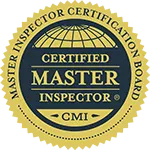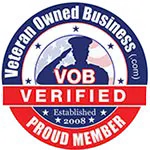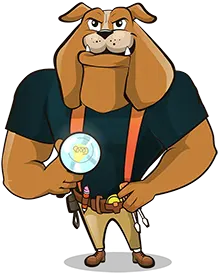KC’s Best Home Inspection Process – The MaxInspect™ System
Are you curious …
- WHAT Makes Kansas City Home Inspectors Different?
- WHY Are Home Inspection Prices Different?
- WHAT makes us one of Kansas City’s Best Home Inspection companies?
The MOST Complete Home Inspection Process in Kansas City
What does this mean?
Our home inspection process is designed for the way home inspections SHOULD be performed.
You see, I knew almost nothing about homes when I first got started back in 2003.
As I gained experience, I realized the home inspection process meant to protect home inspectors also creates most of the disappointment with homebuyers (and still does with other home inspection companies).
But a home inspection process is necessary because homes are dangerous.
There is real risk walking on a roof, getting into an attic, or opening a main electrical panel. Plus, different home inspectors have different skills and abilities while also walking into a broad range of homes made of different materials in various climates and conditions all over the world.
And while the average home inspection process keeps average home inspectors safe, they also scare home inspectors into giving you inferior results.
Which is pretty unacceptable because a home inspector only has one job – find the issues around a home then share them with you in ways you understand.
And if they’re handicapped by an outdated home inspection process, it’s only a matter of time before you get disappointed – or even worse, burned – by their mediocre home inspection process.
This is why some home buyers, real estate investors, and real estate agents even skip the home inspection or walk away feeling confused afterward.
It’s also why you should NOT hire a new, inexperienced (less than 5 years of full-time experience) or low-priced home inspector because their home inspection process taught them to:
- NOT move furniture
- NOT move personal items
- NOT move storage items
- IN FACT, try not to touch anything
Plus…
- Most DON’T have to walk on the roof
- Or REMOVE the electrical panel cover 🙈
- They only check HALF the windows
- And only check HALF the outlets
- They’re scared to use the word ”mold’
- They also WON’T tell you what caused the problems they find
The worst part? This is what you can expect from most home inspection companies.
To them, they’re just following the rules and doing nothing wrong, so you’ll still get charged top dollar for their silly and sad home inspection process that has a good chance of leaving you confused and frustrated later. 😲
And now comes the part where I tell you it doesn’t have to be that way 😉.
Because after the market crash of 2008, I scrapped the guidelines and started inspecting homes my way.
I call these series of techniques…
The MaxInspect™ Home Inspection Process
What’s The Difference?
The BEST home inspection process takes more than just a flashlight and a ladder.
And it takes more than knowing construction terms (like tieback), flipping switches, and peeking inside the attic to get your hands on a quality home inspection process that WON’T make you want to pull your hair out after you move in.

It takes a home inspection process that anticipates the issues and knows which questions to ask – no matter the age, type, size, or location of the home.
And no two homes are the same.
For example, a new home is vastly different than a 50-year-old home.
And a 50-year-old home is vastly different than a historic home.
Electric appliances weren’t common so electrical service size was usually much smaller than today.
These homes were built differently, used different materials, and accommodated different lifestyles than homes of other eras.

Sewer lines were made from clay and cast iron that crack, break, and get clogged so plumbing issues are also a big concern.
Efficiency, consistency, and safety weren’t front and center, so insurance companies (and certain loan programs) also sometimes need proof that these areas – and others – are up to snuff before you get insured.
I’m sure you get the picture.
Now, plop this historic home in the country where updates are slow, repairs are sloppy, and building codes might not even exist, and suddenly you feel like you’re really back in the wild west.
And this is for just ONE house.
Switch it up from a basement to a crawlspace, throw in termites, add sewer line problems (or septic issues), mix in a little Radon gas, and hopefully you see what I mean.
That is why we created a home inspection process called The MaxInspect™ home inspection.
Here’s what goes into the most deliberate, detailed, and exhaustive Kansas City home inspection process designed to uncover maximum defects for maximum return on your investment while giving you minimum risk, loss, and confusion:
100% Inspection
This uncovers 85%-90% of the visible and readily available defects in and around a home.
While there are roughly 400 items the average home inspector must check, our 100% home inspection process checks an average of 2000 items in and around the home (depending on the home).
Our MaxInspect™ Home Inspection Process inspects:
- Landscaping (drainage, driveway, porch, deck, and patios)
- Roof (soffits, fascias, rake boards, ventilation, shingles (including number of layers), flashings, and chimneys2.
- Every window1
- Every toilet1
- Every light and ceiling fan1
- Every switch1
- Every outlet1
- All appliances (that stay with the home)
- Operation and testing of entire plumbing system (inside the home)
- Operation and testing of HVAC system4
- Run water through all faucets for entire inspection3
- Exterior (siding, outlets, windows, window wells, foundation, and retaining walls)
- Attic (insulation, ventilation, ductwork, electrical wiring, roof deck, and rafters)1
- Every door1
- Every ceiling (including stains and cracks)
- Every floor (for waviness and unevenness)
- Every air vent1
- Every garage (including firewalls and openers)
- Foundation (for movement, cracking, and water seepage)
- Testing and inspection of entire electrical system (inside and out)
In a nutshell, we will report on 100% of the items we can test, touch, see, smell, and hear.
1Must be accessible
2Must be safe
3When the home is vacant
4Cooling system when outside temp. >65°F
Gravity Flow™ Process
Movement and moisture cause more damage than just what we see on the surface.
And because gravity is CONSTANTLY pulling things down, we follow these problems as far as we can to help you understand how far they spread and how concerned you should be.
That’s why our home inspection process checks your home from top to bottom. This lets us use the force us gravity to help us uncover the whole story by following cracks and stains down to the source or down as far as they go.
Mystery Glitch™ Technique
Sometimes finding problems is MORE like a riddle than a home inspection.
Mystery glitches are the quirks you sometimes stumble on upexpectedly in a home.
Things like:
- A hallway light switch in a bedroom
- A shower leak that trips a circuit breaker
- A garbage disposal that turns on the microwave
- Or an outlet that turns a ceiling fan on and off. Check it out 👇🏽
You get the picture. And there are dozens of situations like this.
We do our best to track, isolate, and uncover those random—and sometimes annoying—peculiarities that need a little more finesse to find because they’re hidden from plain sight.
It takes years to learn which things go wrong, where they could be, and how to troubleshoot.
Every home is DIFFERENT, so knowing what to expect is impossible.
But that’s a skill we bring to your home inspection process.
10Key™ Comment Method
Finding the defects is only half the battle.
Once we find them, YOU need to understand WHERE it is and WHAT’S happening so you can make the right choice for yourself.
That’s why we answer 11 key questions about the defects we find:
- What did I find?
- Where is it?
- What does it mean?
- What will happen if it’s ignored?
- Any signs of past repairs?
- Is this a major concern?
- Has it affected anything else?
- Has it damaged any surrounding areas?
- What do I recommend?
- What caused it?
- Any signs of past problems?
These are the 11 questions every home inspection report MUST answer if you hope to understand each defect and the impact it has on the home.
You’ll get them in plain English so they’re QUICK and EASY for you – or anyone else – to understand.
Frequently Asked Questions
When you’re NOT concerned about defects in other areas or the home is in REALLY rough condition.
Yes, always. As long as there is safe access and the pitch is not too steep (usually 8-12 or greater).
Good question. There are alot of differences, but too many to list here.
No.
Many real estate investors do not want a termite inspection, so it’s NOT included.
Not at all.
It takes years to master this craft.
Less experienced operators will not have the same knowledge, experience, and intuition as someone who has seen something a thousand times before.
This is important because your home is an engineering feat and you’re about to take full responsibility for it.
1. Have questions.
It’s best to ask before the inspection and again at the end.
2. Attend the inspection.
But try not to distract the inspector with chitchat. He’s trying to build a story that will help you buy the home. Feel free to observe, take measurements, jot down notes, and be there for the summary and discussion when it’s over.












